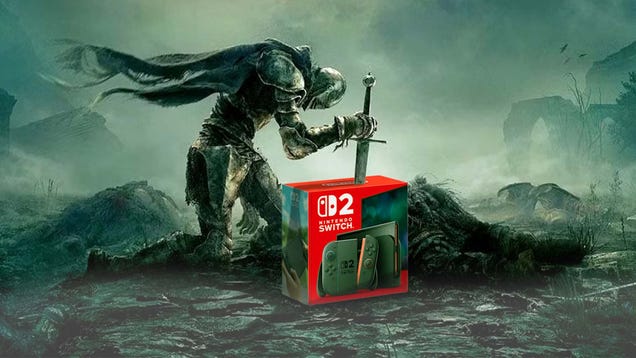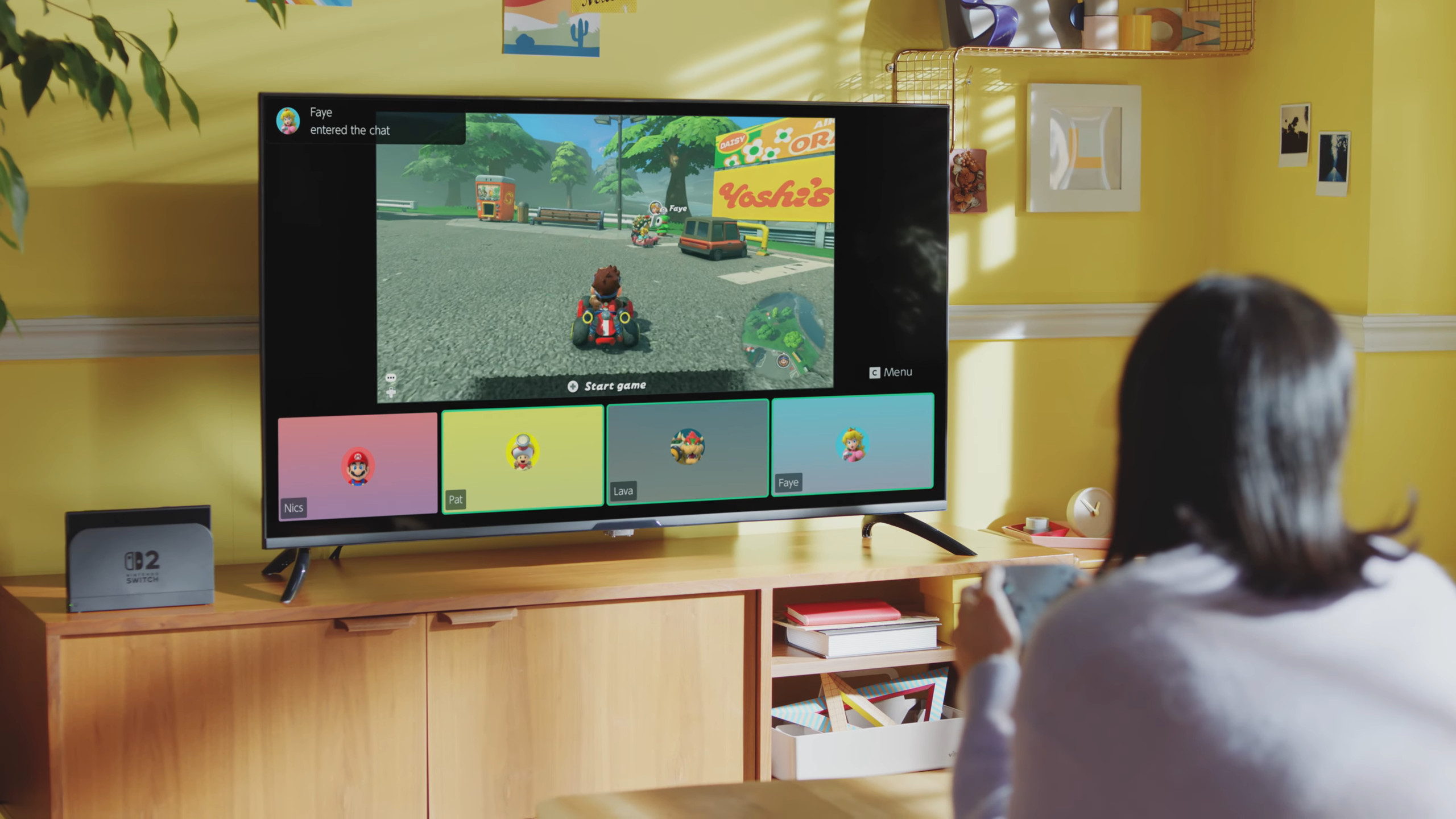
Hisense U7 (2024) Review
Hisense has hit its stride and its 2024 televisions continue to be a premier example of value for the dollar. The U7 series (also called the U7N in some markets) is meant to sit a tier below the U8 series, which I already reviewed highly earlier this year. It’s best described as a “lower-mid-level” television, but it sits in the tier that is the lowest I would recommend a television for serious gamers. It uses miniLED technology and features full-array local dimming.
The thing is, while yes, there are certainly reasons to spring for the higher-end U8, I have to admit that most average television buyers aren’t going to notice the difference. Both get very bright, both have great color accuracy, both support gaming well, and both look great in the living room.
Sure, the U8 brings better brightness and more dimming zones, but the U7 is shockingly competent for a television in its class. There is room for improvement, to be sure, but the Hisense U7 is a great 4K television for multipurpose use.
Hisense U7 (2024) – Design and Build
The Hisense U7 is a smart-looking television. It’s relatively thin for an LED and very lightweight. Without the stand, it would be pretty difficult to tell it apart from the U8 series television it sits below since they share much of their design in common.
Where they differ is in the stand, where Hisense chose to go with a dual-foot, center-positioned stand that has a large piece of plastic that sits between them, giving it the illusion of one giant foot.
It is a very low profile design and situates the display extremely close to your stand, so if you have a soundbar, you might find that even if it is very thin, it comes up and blocks either the IR reader for the remote or leaks up and blocks the display itself. While the remote can be paired to the TV so that it doesn’t need a clear line of sight to the IR reader to operate, that only applies once the television is on. That means I had to go up to the television and aim it behind my soundbar in order to turn the U7 on before sitting back on my couch and navigating normally.
Luckily, the stand is very sturdy, if not a bit oddly designed with the dual foot and plastic cover system it has. That plastic cover also takes up valuable vertical real estate, so if you do have a sound bar you may want to remove it. It doesn’t serve any stability purpose as far as I can tell – it’s just aesthetic.
Cable management is passable. Cables are routed through a set of plastic hooks on either side of the TV and then back behind the dual-foot stand. When you have the plastic cover in place or a soundbar up front, cables are well hidden.
Looking at the U7 from the front, the power cable plugs into the right side while all the other ports sit on the left. That includes four HDMI ports, two of which are HDMI 2.1 compatible and feature up to 4K at 144Hz. The other two cap out at 4K at 60hz but one of those is the eARC input. I appreciate that Hisense put eARC on one of these lesser ports instead of combining it with a high-performance port like Sony does on the Bravia 7, since it lets me use multiple gaming systems simultaneously and without needing to plug or unplug them.
Of note, this only applies to the larger options. For the 55-inch version, Hisense did take one of those high-bandwidth ports for eARC.
The U7 also features a list of other ports: one USB-A 2.0, one USB-A 3.0, an optical digital audio input, a LAN connection, and composite video. The U7 also supports WiFi and Bluetooth 5.3 as well as ATSC 3.0.
Finally, Hisense supports voice control with its televisions and this can be physically turned off via a switch at the base of the TV. When you do this, an orange LED appears and does not turn off. This is certainly an improvement versus the three brighter LEDs of previous years, but it’s still an irritation that I would prefer Hisense remove entirely.
Hisense U7 (2024) – The Remote
The Hisense remote is one of the larger you’ll find on a modern television, although it doesn’t really need the space since there aren’t a ton of buttons. At the top are five pre-programmed shortcut buttons and one customizable shortcut button. My model came with Netflix, YouTube, Prime Video, Disney+, and Tubi as the options.
Aside from the standard fare of buttons, Hisense put a Menu button in the lower left which is how you can quickly access television settings and also the Game Bar, which I’ll get into below.
It’s a perfectly fine remote that gets the job done.
Hisense U7 (2024) – Software and UI
Hisense, like Sony and TCL, uses Google TV which is one of the easiest to manage and customize, and has support for basically every streaming service you could want. While yes, it does pack a lot of advertising onto the front page in the form of “recommendations,” you can turn most of them off by going to Apps Only mode. There, only the main promotions banner shows and it usually is themed to new releases or seasonal content on popular platforms. I find it relatively easy to ignore.
There is sometimes a slight delay between a button press and seeing that request reflected on screen, but it’s not an overly obtrusive delay and it’s not consistent. Once the TV is on and fired up, it’s usually a pretty smooth navigation experience.
If you like customizing your viewing experience, Hisense gives you a pretty robust menu to do so. You can select picture profiles and adjust brightness, contrast, strength of the dimming zones, and more. Brightness actually does mean brightness in the interface too – it doesn’t just make the content on screen lighter but actually raises the power of the backlights.
There is one nitpick I have with Hisense TVs and it’s not just on the U7: I don’t like that if I turn the volume down to zero, it shows a mute icon on-screen. Sometimes I just like on-screen content but no sound and I don’t like seeing that icon up there. I understand it if I actually hit “mute,” but I would prefer no indicators on screen for when the volume is set to zero.
Hisense has very good HDR support in addition to a built-in filmmaker mode. The U7 supports Dolby Vision, HDR10, HDR10+, and HLG, which means for almost everything, you’ll get a great color-matched HDR experience.
Hisense U7 (2024) – Picture Quality
The Hisense U7 is very color-accurate and has good uniformity across the panel. The colors lean a bit blue, but that’s easily corrected if it bothers you. In testing, the panel showed 99.5% coverage of sRGB, 83.2% coverage of Adobe RGB, and 93.5% of the DCI P3 color gamuts with an average delta E of less than one. That’s a great showing for any television, but for a display in this price bracket, it’s outstanding.
Uniformity is great too. Outside of the very far top corners, which dipped below nominal tolerances, the rest of the panel performed great and you should expect great color across the screen.
I do want to point out that I think Hisense has a “dirty panel” problem, though. The last four Hisense televisions I’ve reviewed had small scatterings of grey pixel splotching in places that, prior to this, I was willing to chock up to bad luck. However, it’s become common and consistent enough for me to point it out now: there is a chance you’ll have these splotches on your display and they do not come out. My U7 review unit has the largest splotch I’ve seen yet, located in the middle upper third of the display. Most of the time, I can ignore it, but when gaming I definitely see it.
The U7 has Hisense’s new Hi-View Engine PRO chip which is designed to make a variety of content look better. I can speak to the results: movies, games, and television look pretty darn good. The U7 will perform better if it has more data to work with, so that means higher bitrate content is going to give you the best results and low-quality 720p streamed television looks pretty weak.
When it does have a good high-definition stream to work with though, I was very happy with the color balance and contrast, although I will admit the U8 has the U7 beat when it comes to deeper blacks.
Panels like this one typically perform worse when not viewed straight on, but I don’t think the off-angle viewing degradation is particularly bad here. Sure, some contrast falls off but it’s still perfectly serviceable for a living room.
One weak spot for Hisense televisions is that they are susceptible to bloom – when bright objects set against black backgrounds have a glow around them – and that remains the case here. You’ll definitely see it if you have subtitles against letterboxed content. This is very difficult to get rid of on LED displays and really the only solution is OLED, so seeing it here is not a surprise.
Brightness comes in just below 1,000 nits, which isn’t nearly as bright as the U8, but it’s still plenty bright for many rooms and will only be challenged by big, sunlit windows directly across from the panel. I found the glare to be minimal on the U7, too and while reflections do appear, they’re not overly distracting.
Hisense U7 (2024) – Gaming Performance
I like gaming on Hisense TVs, as I find the balance of colors, saturation, and contrast to be very easy on the eyes and pretty true-to-life. That remains the case here, as extended sessions playing Risk of Rain 2 (PS5), Apex Legends (PS5), and Cyberpunk 2077 (PC) left me pretty satisfied with the results.
Apex Legends and Risk of Rain performed the best as the on-screen content doesn’t demand a lot from the panel. Where the U7 was notably weaker than higher-end televisions was on Cyberpunk, where the wide range of colors and deep shadows compound into a complicated contrast situation that the U7 didn’t handle as well. It wasn’t much worse than other LED displays, even those that are more expensive, but I definitely noticed a comparable loss of visual fidelity.
But for high frame rate competitive gaming, I don’t want that much contrast and don’t seek out dark shadows, and there the U7 did great. The game bar is one of the better iterations on the market and shows not only the current resolution and frame rate, but also gives you access to gaming specific settings that anyone who spends a lot of time on a PC or console will appreciate.
Hisense U7 (2024) – Audio Quality
When you make televisions this thin, you run up against physics and as a result, very few (if any) companies are making televisions that sound good with no assistance. Don’t get me wrong, the U7 gets loud and you can clearly make out audio, which is great, but there is almost no low-end to it. Bass is weak and even mids feel lacking in places.
Hisense tried by implementing a bass into the rear of the TV, but there just isn’t much room for air to move around in there, so the results aren’t ideal. You’ll want some kind of external sound system for the U7, and my previous notes about how limiting the stand is for sound bars further complicates the situation. You may be best served wall-mounting this display.
Hisense U7 (2024) – The Competition
The U7’s biggest competition comes in the form of TCL’s QM7 and Hisense’s own U8. TCL’s QM7 is a very nice television that has slightly better color accuracy and brightness, but also comes in around $100 more expensive. For a couple hundred dollars more, you’re looking at the U8 which is an upgrade when it comes to brightness and contrast. All of these televisions are vying for your attention and are within a few hundred dollars of each other and they all perform quite well, provided you know why one might cost more than the other and if you’re willing to take that sacrifice to save the cash.















